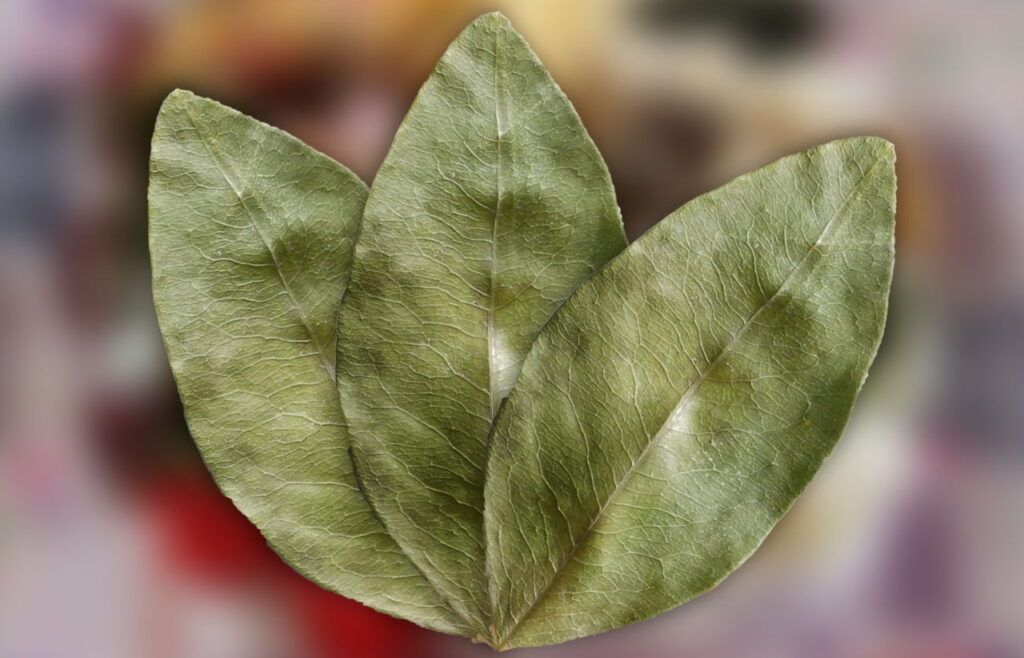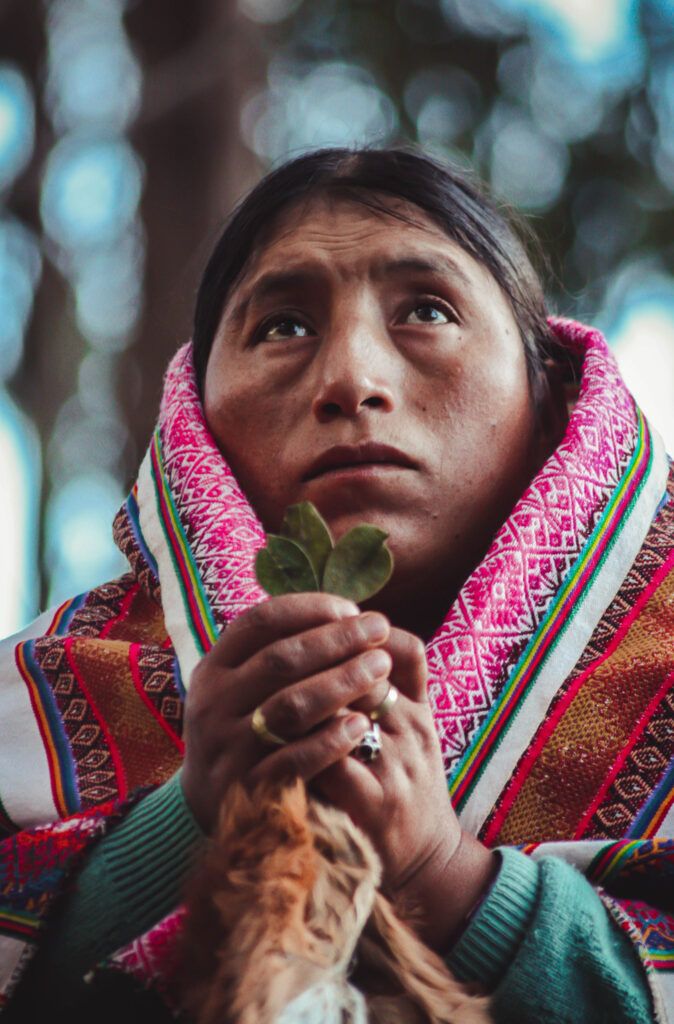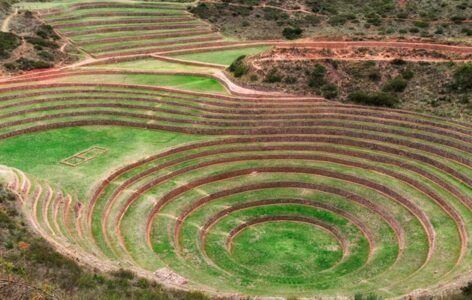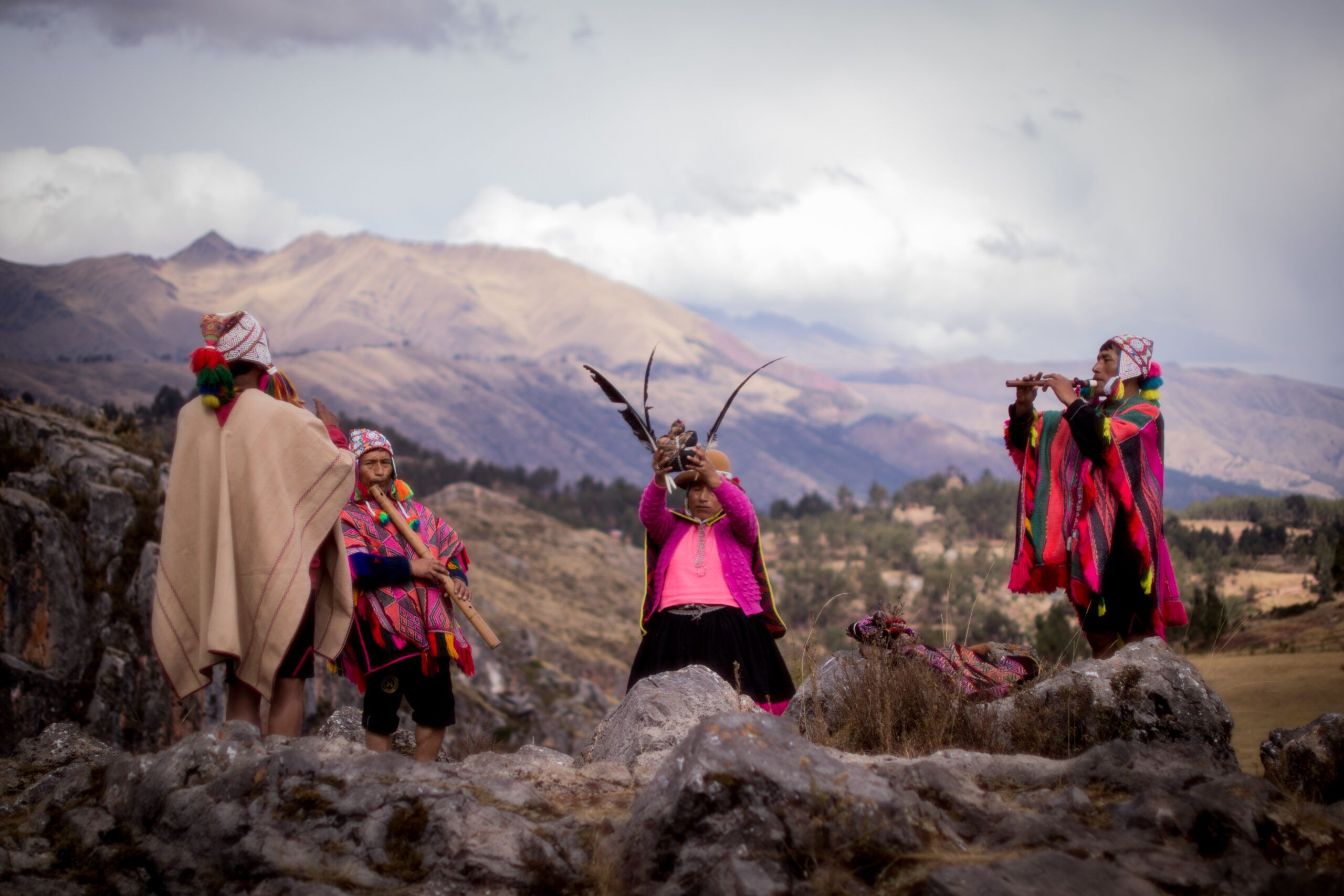In the high Andes, where the air is thin and the mountains hold stories older than memory, a small bundle of three coca leaves (Kintu) carries a significance far beyond its size. This bundle, called a kintu, is one of the most recognizable and powerful offerings in the living tradition of Andean medicine. To the uninitiated, it may appear as just a handful of leaves. To those who walk the path of the paqos (Andean healers), it is a sacred key—a bridge between worlds, a prayer made tangible, and a vessel for gratitude.

Historical and Cultural Context of Kintu
The coca plant (Erythroxylum coca) has been cultivated and revered in the Andes for thousands of years. Chronicler Garcilaso de la Vega noted that coca was considered a divine plant, offered to both Apus (mountain spirits) and Pachamama (Mother Earth) before any significant undertaking (de la Vega, 1609).

A kintu consists of three perfect coca leaves, carefully selected so that their size, color, and texture harmonize. These three leaves represent the three worlds of the Andean cosmology:
- Hanan Pacha – the upper world of the sacred, the stars, and the future.
- Kay Pacha – the present, the world of humans and earthly life.
- Uku Pacha – the inner or underworld, the realm of ancestors and the seed of new beginnings.
By bringing these three realms together in a single offering, the kintu symbolizes unity, harmony, and reciprocity (ayni).
The Ritual of the Kintu

Traditionally, the paqos hold the kintu between their fingers and blow three breaths into it, each breath carrying intention and gratitude. This act, called phukuy, infuses the leaves with the person’s energy and message. The kintu is then placed on the earth, buried in a despacho (offering bundle), burned in a fire, or left in a sacred place such as a spring or a stone altar.
As anthropologist Catherine Allen notes, “To offer coca is to speak in the proper language to the sacred landscape” (Allen, 2002, p. 42). The kintu becomes both a message and a messenger—it carries human prayers to the spiritual forces and returns their blessings in kind.
Medicinal and Spiritual Dimensions
While coca leaves are known for their medicinal qualities—relieving altitude sickness, aiding digestion, and sustaining physical energy—the kintu is not consumed but rather dedicated. Its purpose is not to heal the body directly, but to heal relationships:
- Relationship with the land: expressing gratitude for its gifts.
- Relationship with the spiritual world: seeking guidance and protection.
- Relationship with the self: aligning inner energy with universal flow.
Modern Practice Beyond the Andes
For those outside of Peru, authentic coca leaves may not be legally accessible. However, the principle of the kintu can be adapted with respect. In place of coca, one might use three harmonious leaves from local plants—oak, bay, laurel, or any leaf that feels significant and “alive” to the touch. The steps remain the same:

Choose three perfect leaves—symbolizing the three worlds.
Hold them together—feeling their texture and shape.
Breathe your intention into them—three slow, intentional breaths.
Offer them to the earth, water, or a sacred fire, with gratitude.
What matters most is the reciprocal intention—the same ayni that has guided Andean offerings for centuries.
The kintu teaches that the most profound offerings can be the simplest. Three leaves, a few breaths, and a heart full of gratitude can bridge the human and the sacred. In Andean medicine, this small gesture becomes a powerful act of alignment, inviting balance across all worlds—Hanan Pacha, Kay Pacha, and Uku Pacha.
References
- Allen, C. J. (2002). The Hold Life Has: Coca and Cultural Identity in an Andean Community. Smithsonian Institution Press.
- de la Vega, G. (1609). Comentarios Reales de los Incas. Lisbon.
- Rostworowski, M. (1999). History of the Inca Realm. Cambridge University Press.



